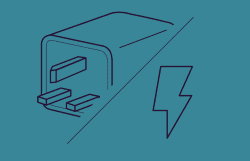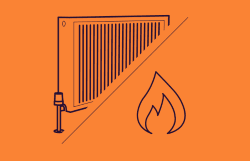Businesses face a range of energy supply options, and dual fuel tariffs are an attractive option for many. These tariffs give businesses the option to source both gas and electricity from the same supplier, potentially delivering cost savings and increased efficiency. In this blog, we’ll explain what dual fuel tariffs are, and how they can benefit your business.
What are dual fuel energy tariffs?
Dual fuel tariffs are energy supply options for businesses that provide both gas and electricity from the same supplier. By having one supplier for both energy sources, businesses can benefit from economies of scale and cost savings.
These tariffs come in different forms, depending on the supplier. The most common type is a dual fuel discount, which offers businesses a discount when they buy both gas and electricity from the same supplier. Other options include ‘dual fuel bundles’, which offer discounts for buying multiple services from the same supplier, and ‘dual fuel plans’, which provide businesses with tailored energy prices to meet their specific needs.
What are the benefits of dual fuel tariffs?
The most obvious benefit of dual fuel tariffs is the cost savings they can bring. As you get both gas and electricity from the same energy provider, businesses can benefit from economies of scale, as well as discounts for buying multiple services. This can help to reduce the amount you pay for your energy, making it more cost-effective.
In addition to cost savings, dual fuel tariffs can provide businesses with greater flexibility. By selecting one supplier for both energy sources, businesses can be sure that their energy requirements are met with minimal disruption. This can help to reduce downtime and ensure that operations run smoothly.
Another benefit is its streamlined billing. With a dual fuel tariff, you will receive a single bill for both your electricity and natural gas usage, rather than receiving separate bills from different providers. This can make it easier to budget for your energy expenses, and can reduce the risk of missing a payment or incurring late fees.
The customer service can also be much easier. If you have a problem or question about your energy service, you only have to contact one company, rather than trying to navigate different customer service departments for each type of energy. This can save you time and frustration, and can make it easier to get the help you need if you have an issue with your energy service.
Finally, it can offer green energy options. Some dual fuel tariffs offer the option to purchase renewable energy, such as wind or solar power, as part of the package. If you are interested in reducing your carbon footprint and supporting the use of renewable energy sources, a dual fuel tariff with a green energy option might be a good fit for you. It’s worth noting that these types of tariffs may be more expensive than traditional energy plans, so it’s a good idea to compare costs and consider whether the added cost is worth it for you.
Are Dual Fuel Tariffs always cheaper?
It’s not necessarily the case that dual fuel tariffs are always cheaper than purchasing electricity and natural gas from separate providers. The cost of your energy will depend on a variety of factors, including your location, the rates and terms offered by different providers, and how much energy you use.
The government’s Energy Price Guarantee will restrict what suppliers may charge per unit of gas and electricity starting on October 1, 2022, capping the annual energy expenditure of the average home at £2,500. In April 2023, the maximum is expected to increase to £3,000. But keep in mind that you will pay more the more energy you consume.
Fixed tariffs are often a better option under normal conditions, therefore it’s important to monitor them closely to see whether their cost decreases.
To get the best deal on your energy service, it’s a good idea to compare dual fuel energy rates and terms from multiple providers and to carefully consider your energy needs and usage patterns. If you are able to find a dual fuel tariff that offers cost savings or other benefits that are important to you, it could be a good option to consider. However, if you are able to find a better deal by purchasing electricity and natural gas from separate providers, that might be the more cost-effective option for you.
It’s worth noting that dual fuel tariffs may not be available in all areas, and that the types of tariffs and rates that are offered can vary significantly depending on where you live. It’s a good idea to research the options available in your area and to carefully compare the costs and terms of different energy plans before making a decision.
How can I switch to a Duel Fuel Tariff?
To switch to a dual fuel tariff, you will need to contact your current energy supplier and ask about their best dual fuel deals. You can also shop around and compare prices from other energy companies to see if you can find a better deal. Here are some steps you can follow to switch to a dual fuel tariff:
Determine your energy usage: Before switching to a dual fuel tariff, it’s a good idea to determine your energy usage so that you can find a plan that meets your needs. You can do this by reviewing your past energy bills or using an online energy calculator.
Research your options: Once you know your energy usage, you can start researching different dual fuel tariffs and comparing prices from different energy companies. Make sure to read the fine print and understand any fees or restrictions that may be associated with the tariff.
Contact your current energy supplier: If you decide to switch to a dual fuel tariff with your current energy supplier, contact them to see what options are available. They may be able to offer you a discounted rate if you agree to a longer contract.
Consider switching energy suppliers: If you can’t find a good dual fuel tariff with your current energy supplier, you may want to consider switching to a different company. Be sure to compare prices and read reviews before making a decision.
Inform your current energy supplier: If you decide to switch energy suppliers, you will need to inform your current energy supplier. They will then arrange for your service to be transferred to your new supplier.
How do I find the best Dual Fuel Deal?
A great way to save on energy costs is by comparing dual fuel tariffs from different suppliers in your area. This can help you identify the cheapest option available to you. You are not limited to switching to one of your current suppliers, you have the flexibility to switch either one or both of your fuels to find the best deal.
To find the best dual fuel tariff, you can use a website like Uswitch and enter your postcode to start an energy comparison. Have your recent energy bill handy as you will need to provide some details. The website will then show you the best dual fuel deals available in your area and you can choose the one that best suits your needs.
Once you have found the cheapest deal, you can apply to switch to the new supplier. The process of switching will be taken care of for you, you don’t have to worry about anything.
When comparing dual fuel tariffs, there are a few key factors to consider:
Price: Compare the rates for both gas and electricity from different providers to find the best deal. Be sure to compare the cost of each unit of energy, as well as any fixed or standing charges.
Contract length: Consider how long you’re willing to commit to a provider for. Some tariffs have longer fixed-term contracts, while others offer more flexibility with no exit fees.
Payment options: Some providers offer different payment options, such as direct debit or budget billing, which can be useful depending on your personal circumstances.
Rewards and discounts: Some dual fuel tariffs offer rewards or discounts to customers who pay their bills on time, or who agree to receive their bills electronically.
Green tariff: check if the supplier offer green or renewable tariff option, if you are environmentally conscious this could be an important aspect.
Price Guarantee period: some suppliers provide a price guarantee period so that you know that you pay a fixed rate during that period, it’s also helpful to compare how long the guarantee period is.
Customer service and switching process: Before making a final decision, it’s also a good idea to review customer service ratings and the provider’s reputation for handling complaints or issues quickly and effectively.
How long does it take to switch energy deals?
The energy switch guarantee ensures that switching energy providers is quick and easy, typically taking no more than 21 days. In most cases, the process is completed within 17 days and can take as little as two weeks. Your new energy supplier will handle the transfer process with your current provider. You may be required to provide a final meter reading to settle your bill.
What energy suppliers offer dual fuel tariffs?
Most energy suppliers offer dual fuel tariffs. Be sure to shop around and compare prices with other providers, making sure you’re getting the best deal, also contact your individual electricity and gas providers to see what dual fuel tariffs they can offer you.




